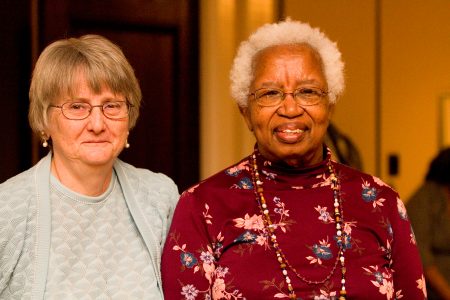Shared Affordable Housing



Since 1984, HomeSharing’s mission has been to match “Providers” – residents who need to share their homes or apartments in order to maintain them, with “Seekers” – individuals searching for affordable housing in the community. We are the only agency in New Jersey using the shared housing model to serve the working poor whose incomes are at or below the poverty level and who are not eligible for other social services. HomeSharing also assists clients in utilizing other resources such as the Food Bank, low-cost medical care, and other support services. Approximately 50% of our Providers and 25% of our Seekers are seniors, age 60+. In addition, 80% of our 3,500+ clients earn less than $30,000 per year, 31% have disabilities; and 44% are female heads of household.
HomeSharing benefits Providers because they are able to stay in their homes without leaving the community, utilizing public assistance, or, in the case of older adults, being institutionalized. Seekers benefit finding below market-rate rents to live better on their incomes. The shared arrangement helps provide increased income for food, medications, and clothing or allows the Providers to arrange for an exchange of service such as meal preparation, errands, or house cleaning in lieu of paying rent to the Provider. The local community benefits by employees living near their work locations; paying taxes in the local county; and by a reduction in the need for construction of costly housing units.
Sharing housing can make participants healthier and happier and live longer. Studies have found that having a strong sense of connection and nurturing with others can contribute to longevity. In the June 2017 issue of Harvard Health Letter, Dr. Robert Waldinger, a psychiatrist with Harvard-affiliated Massachusetts General Hospital, states: “Good, close relationships appear to buffer us from the problems of getting old”. A study of home sharing arrangements found that home sharing can help elders to feel safer in their homes; to sleep and eat better; to get out in the community more often; to get chores done more easily; and to reduce the need to call on their families for help. Shared housing allows for greater independence for aging individuals for a greater period of time. The “Sandwich Generation” – people caring for children and aging parents – gets relief and support because “aging in place” gets easier.
The HomeSharing process begins with an intake phone call or visit by the client in which registration takes place to initially screen the client into HomeSharing services or to make referrals to other agencies. Background/reference checks are completed; and potential clients complete an initial application. Providers and Seekers are interviewed to learn about their personal habits and their history, confirm employment, and ensure that there is adequate income to cover the monthly rent. Clients are provided with the contact information for potential matches. Once a match is made between the two prospective clients, a HomeSharing shared housing meeting is scheduled; and our Social Worker facilitates a discussion on all aspects of the shared living agreement. Both Seeker and Provider leave the meeting with a written copy of an agreement. HomeSharing monitors the match through follow-up phone calls, visits and surveys (to measure outcomes) during the life of the match as well as during the Holiday Food programs and other HomeSharing events (such as after-work get togethers, picnics).
Website: http://homesharing.org/
Main target group: Vulnerable older people (e.g. at risk or victims of abuse, living alone, poor etc.)
Other target group(s): Female Heads of Household; Disabled; Low income individuals
Sector(s): Housing, Social protection
Desired outcome for older people:
Meet their basic needs
Other Issues: Affordable Housing
Name: Blum, Lisa
Email address: lblum.homesharing@verizon.net
Preferred language(s): English